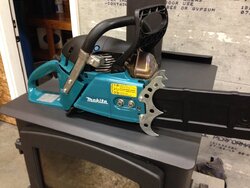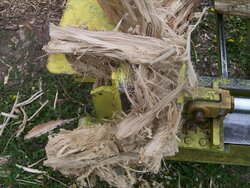WoodyIsGoody
Minister of Fire
Depends on the wood. Not everything is straight-grained and knot free. Splitting elm or well seasoned madrona rounds with an axe or maul is an exercise in futility.
Elm is best split after it's partially seasoned and with a sharp blade. It's easiest when it's partially seasoned and frozen. Madrone should be split fresh and is not that much trouble. Madrone will pop right open if you have good velocity on your splitting axe. The good thing is both of these woods put out about twice as much heat as easier splitting woods like most of the softwoods so you are rewarded for the extra sweat (only have to split half as much for the same BTU's).
My favorite kinds of wood to split are the twisted, knotty ones. When I see twists and knots all I see is Btu's and warmth. If my blade is sharp I aim right for the center of the knot and one mighty blow is often enough to split it right down the middle. If the wood has sat around too long I might have to split around the knots which just means it will take longer to fully season.
With an old school heavy, dull maul, it's important to have a dense splitting round that's big in diameter but not too tall sitting on firm ground. This is one reason elm splits so much better frozen, the ground is hard. A tall round will hold the round to be split too high for optimum impact. If you have a lot of difficult wood to split (like Elm) it's often worth the extra prep to dig a hole for your splitting round to sit in. This not only provides better ergonomics but gets you down to firmer ground. And do let it dry out some first.




 It is less convenient and messier, but it uses a local waste resource and provides a better view than television these days.
It is less convenient and messier, but it uses a local waste resource and provides a better view than television these days.


